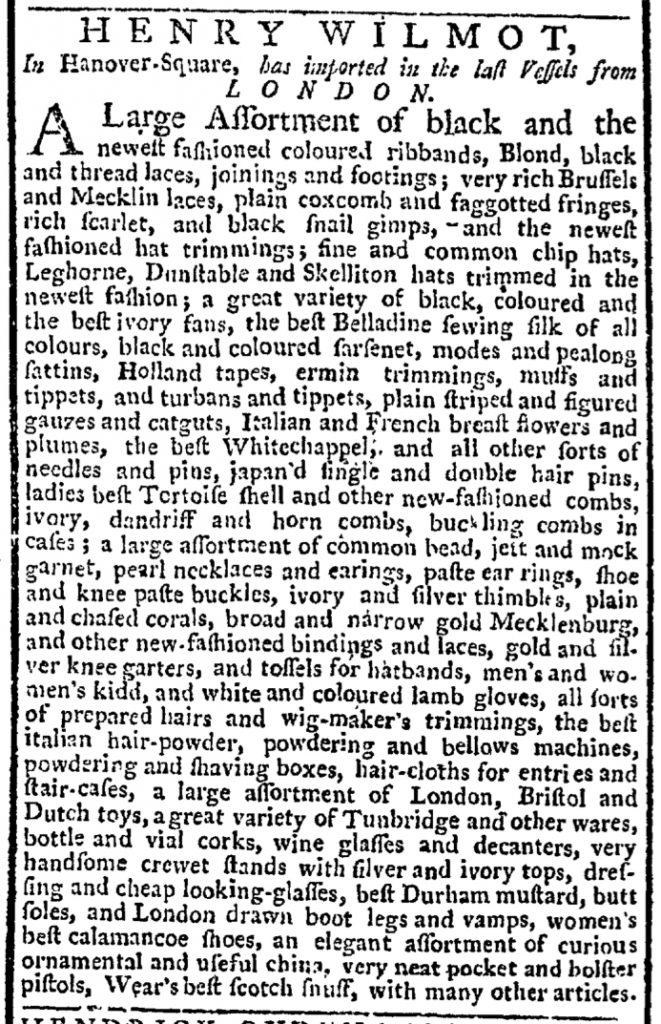What was advertised in a colonial American newspaper 250 years ago today?

“Newest fashioned hat trimmings.”
At his shop on Hanover Street in New York, Henry Wilmot stocked an impressive array of goods “imported in the last Vessels from LONDON.” His advertisement in the December 24, 1767, edition of the New-York Gazette: Or, the Weekly Post-Boy described all kinds of personal adornments, from lace and ribbons to hairpins and combs to jewelry and gloves. To incite demand for these baubles from Britain, Wilmot deployed one of the most common marketing strategies of the period, an appeal to fashion. Many shopkeepers made general statements about the fashionable qualities of all of their wares, but Wilmot instead reiterated this point throughout his advertisement. He repeated some variation on the phrase “newest fashion” five times in the list of his inventory: “newest fashioned coloured ribbands,” “newest fashioned hat trimmings,” “Leghorne, Dunstable and Skelliton hats trimmed in the newest fashion,” “new-fashioned combs,” and “new-fashioned bindings and laces.”
This method may have been intended to convey to potential customers that Wilmot exercised careful attention to detail when it came to keeping abreast of the latest trends in London. Rather than make sweeping claims about all of his merchandise, he highlighted particular items that consumers could trust reflected tastes currently on display in the cosmopolitan center of the empire. In turn, this suggested that he could provide guidance in selecting from among his other merchandise, steering customers away from items too far out of style in favor of those that suitably complemented the “newest fashioned” garments and adornments. At the very least, repeating the phrase “newest fashion” may have induced potential customers to associate all of Wilmot’s merchandise with current styles, as did the use of adjectives like “best” and “elegant.”
Colonial consumers often worried that shopkeepers hawked whatever merchandise they could acquire, that English merchants sent castaways no longer popular in the London market. Wilmot addressed those suspicions with repeated assertions that he stocked and sold goods of the “newest fashion,” stylish items that had not been lingering in his shop but instead arrived on the vessels that most recently entered port.
